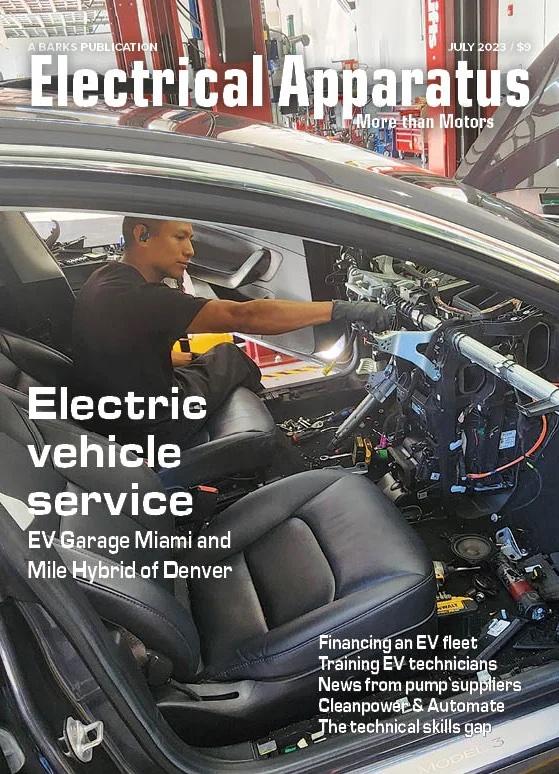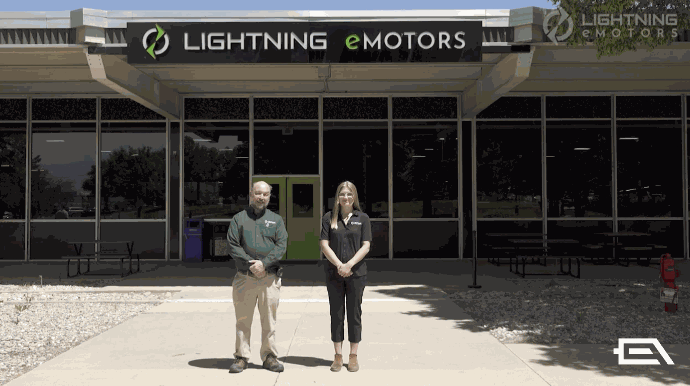Reading time: 5 min
Author: Ev Garage Marketing Department
As the world steadily embraces electric vehicles (EVs), fleet managers in Miami, Florida, and beyond are at the forefront of this transition. Commercial electric vehicles are making their way into fleets, and while the benefits are clear, ensuring driver safety in this new era is paramount.
In this article, we will delve into the top questions that every fleet manager should be asking when it comes to EV driver safety.
Have I provided sufficient training?
Switching to electric vehicles in your fleet requires a comprehensive training program to teach drivers how to securely and skillfully operate these cars. The training program should cover many topics, including the following:
- Owner handbook
- Keys
- Driver preferences
- How to operate
- The vehicle
- Options for the Infotainment System
- Options for the vehicle charging system Software updates
It is vital to know the details of a given electric vehicle, including the position of manual door release switches in case of emergencies. Drivers can familiarize themselves with electric vehicle technology through video tutorials or personal training sessions.
How do I help drivers plan trips using electric vehicles?
Electric vehicles require more planning compared to traditional gas-powered cars. Drivers must carefully monitor the car's battery level to prevent being stuck during work travels. It is crucial to research charging stations on a map before embarking on long journeys.
It is worth mentioning that there are fewer charging ports than gas stations, but the availability of charging infrastructure is on the rise.
Finding charging stations on a map is important for electric vehicle drivers. It's good to know that the number of charging stations is increasing. One major change in the EV charging world is the use of NACS adapters which enable non-Tesla electric vehicles to use the Tesla charging network.
Tesla has usually limited its Supercharger network to only Tesla drivers. However, some EV manufacturers and dealers are now making an attempt to use Tesla's charging infrastructure by allowing non-Tesla electric vehicle owners to access certain regions.
This adapter gives non-Tesla EV drivers more charging choices by permitting them to use the high-speed Tesla Supercharger network, which can greatly reduce charging times in searching for a charging point. It's a significant move towards increasing the ease and availability of charging infrastructure for all electric vehicle users.
As electric vehicle use increases, partnerships and inventions such as the NACs adapter are important in establishing a more connected and easy-to-use charging system. This benefits drivers and supports the switch to a greener mode of transportation.
Mobile apps such as PlugShare, Open Charge Map, and Charge Hub can assist drivers in locating charging stations. Furthermore, drivers should learn how to extend their vehicle's range by using energy-efficient driving techniques and modifying the safety settings for regenerative braking.
Do electric vehicles have advanced safety technology?
Investing in EVs can enhance safety due to the advanced driver-assistance systems (ADAS) found in newer models. These systems help reduce accidents. Manufacturers are rapidly adding ADAS features into commercial EVs, further improving safety.
These features are indeed making EVs more attractive and user-friendly. Here's a brief recap of some key ADAS features in electric vehicles:
Intelligent Cruise Control (ICC): ICC, sometimes called adaptive cruise control, uses radar or camera sensors to keep a safe distance from the vehicle in front. It adjusts the speed of the EV to match the pace of the lead vehicle, creating a smoother and more managed driving experience, particularly during heavy traffic.
Lane Departure Warning (LDW): LDW uses cameras to monitor the car's position in its lane. If it detects unintended lane departure, it alerts the driver with audible or visual signals. This prompts corrective action and reduces the risk of lane-related accidents.
Blind Spot Detection (BSD): BSD systems rely on sensors to identify vehicles in the driver's blind spots. When the system detects a vehicle in the blind spot or the driver tries to switch lanes with a nearby vehicle, it warns the driver to prevent dangerous lane changes.
EVs often have parking aids, such as rearview cameras and parking sensors, which make parking safer and more convenient by showing a clear view of the surroundings and alerting drivers to obstacles.
Collision avoidance technology is also available. Collision prevention systems use sensors and cameras to identify possible collisions with other vehicles or objects. In dangerous situations, these systems can automatically apply the brakes or take evasive action to reduce or prevent accidents, which improves overall safety.
ADAS features not only enhance safety but also contribute to a more comfortable and enjoyable driving experience in electric vehicles. As technology continues to evolve, future EVs are likely to incorporate even more advanced ADAS systems, further improving safety, reducing accidents, and promoting the widespread adoption of electric mobility. For example, Ford's E-Transit, such as the Lightning Van, has features such as collision alert, automatic braking, and lane-keeping assist. These features promote safer driving for those operating electric vehicles.
How can telematics systems assist?
Telematics systems are invaluable tools for fleet administrators and individual electric vehicle (EV) owners alike. They provide a wealth of data and insights that can enhance safety, efficiency, and overall EV performance. Here's how telematics systems can assist in managing and optimizing EV operations:
Driving Behavior Monitoring: Telematics systems collect real-time data on driving habits, including speed, acceleration, and braking. Fleet administrators can use this information to identify and address risky behaviors such as speeding, aggressive driving, and harsh braking.
Distraction Detection: Some advanced telematics systems incorporate features that detect distracted driving behaviors, such as smartphone usage while driving. This functionality helps fleet managers and individuals promote focused and safe driving practices.
Battery Life and Performance Monitoring: Telematics systems have access to critical EV data, including battery life, state of charge (SOC), and range estimates. Fleet administrators can monitor the battery health of their EVs and plan charging schedules more efficiently to ensure vehicles are ready for use when needed.
Trip Tracking: Telematics systems record trip data, including distance traveled, time spent on the road, and route taken. This information is useful for managing fleet operations, optimizing routes, and ensuring that drivers adhere to schedules.
GPS Integration: Telematics systems include GPS functionality, allowing fleet managers to track the real-time location of their EVs. This is essential for route optimization, monitoring vehicle movement, and ensuring that vehicles are where they should be.
Maintenance Alerts: Telematics systems can monitor vehicle diagnostics and provide alerts for maintenance needs. This proactive approach to maintenance can prevent breakdowns and ensure that EVs are in optimal condition.
Efficient Subsystem Interaction: Telematics systems directly connect to EV subsystems, allowing for efficient communication and control. This enables remote diagnostics, software updates, and troubleshooting, reducing downtime and improving the overall reliability of the EV.
Data Analytics: Telematics systems collect a vast amount of data over time. Advanced analytics tools can help fleet managers and individuals make informed decisions about vehicle usage, maintenance, and driver behavior. These insights can lead to cost savings and improved efficiency.
In summary, telematics systems provide a comprehensive set of tools for managing and optimizing electric vehicle fleets and individual EVs.Their importance lies in advancing safe driving, prolonging battery life, improving maintenance procedures, and boosting overall efficiency in the electric mobility industry.
Ensuring the safety of drivers who use electric vehicles in your fleet is a complex task that includes training, planning, technology, and telematics.






